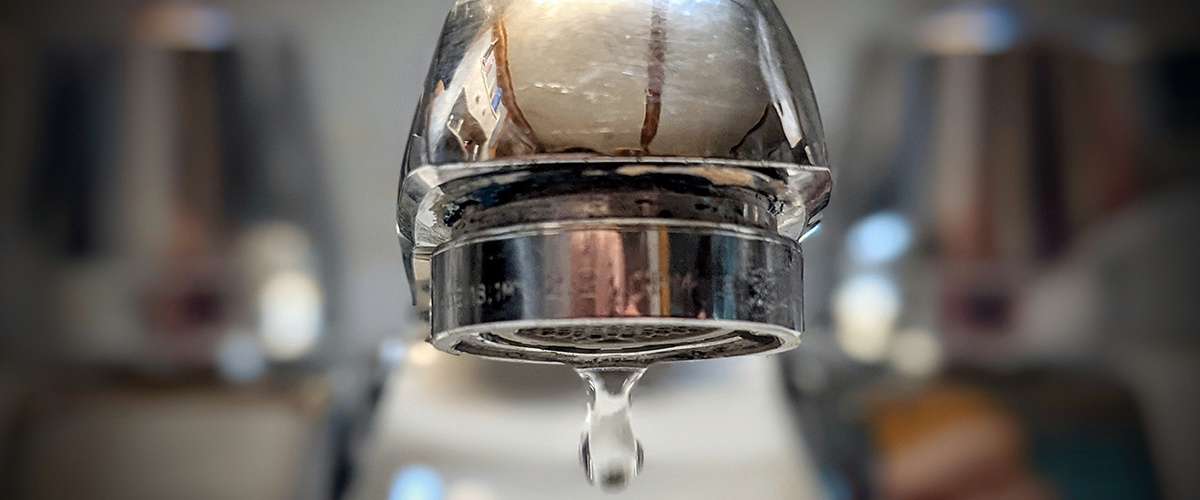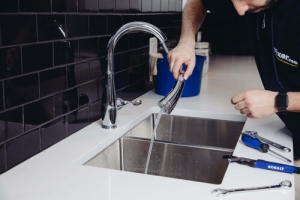How do you actually feel in regards to What Causes Leaky Faucets & How To Fix Them?

Leaking taps could seem like a minor hassle, yet their impact goes beyond just the inconvenience of the noise. From wasting water to incurring unnecessary economic prices and wellness threats, overlooking a trickling tap can bring about numerous effects. In this write-up, we'll explore why it's important to address this common house concern immediately and efficiently.
Wastage of Water
Ecological Effect
Dripping taps contribute considerably to water wastage. According to the Environmental Protection Agency (EPA), a solitary faucet trickling at one drip per second can throw away more than 3,000 gallons of water per year. This not just strains water sources yet likewise influences environments and wildlife based on them.
Step-by-Step Overview to Repairing a Dripping Faucet
Devices Called for
Before attempting to deal with a dripping faucet, collect the necessary tools, consisting of a flexible wrench, screwdrivers, replacement parts (such as washers or cartridges), and plumber's tape.
Typical Tap Issues and Their Solutions
Recognize the type of faucet and the particular problem creating the drip. Usual troubles include worn-out washers, corroded valve seats, or defective O-rings. Refer to producer instructions or online tutorials for step-by-step assistance on repair work.
Financial Expenses
Boosted Water Expenses
Past the environmental impact, leaking taps can pump up water expenses significantly. The built up wastage with time equates into higher energy costs, which could have been avoided with prompt repair services.
Potential Residential Property Damage
In addition, extended dripping can bring about damage to components and surfaces bordering the tap. Water accumulation can trigger discoloration, rust, and also structural problems if left unattended, causing additional repair service costs.
Health and wellness Problems
Mold and Mildew Development
The constant existence of dampness from a dripping faucet produces an ideal atmosphere for mold and mildew and mold development. These fungis not only jeopardize interior air top quality yet additionally pose health risks, especially for people with respiratory system problems or allergic reactions.
Waterborne Conditions
Stagnant water in leaking faucets can become a breeding ground for bacteria and other virus, raising the threat of waterborne diseases. Impurities such as Legionella microorganisms prosper in stagnant water, potentially bring about severe health problems when ingested or inhaled.
DIY vs. Specialist Repair service
Advantages and disadvantages of DIY Fixing
While some may attempt to take care of a dripping faucet themselves, do it yourself fixings come with their very own set of obstacles. Without appropriate expertise and tools, do it yourself attempts can worsen the issue or result in insufficient repair work, lengthening the problem.
Benefits of Hiring an Expert Plumber
Working with a professional plumber guarantees that the underlying root cause of the trickling faucet is dealt with properly. Plumbing professionals have the proficiency and equipment to diagnose and repair faucet problems effectively, conserving time and decreasing the threat of more damages.
Ecological Duty
Specific Payment to Preservation
Taking responsibility for fixing dripping taps straightens with more comprehensive initiatives toward water conservation and ecological sustainability. Every person's activities jointly make a considerable impact on maintaining priceless resources.
Sustainable Living Practices
By focusing on timely repair services and adopting water-saving behaviors, people contribute to lasting living practices that profit both present and future generations.
Safety nets
Routine Maintenance Tips
To stop leaking taps, carry out regular maintenance such as cleansing aerators, examining for leakages, and replacing damaged parts immediately. Additionally, think about mounting water-saving devices or updating to extra efficient components.
Significance of Prompt Fixes
Addressing dripping faucets as quickly as they're seen prevents further water waste and prospective damages, eventually conserving both water and cash over time.
Effect On Property Value
Perception of Well-Maintained Residential Or Commercial Property
Maintaining a home in good condition, including dealing with maintenance problems like leaking faucets, boosts its regarded value and value among possible purchasers or renters.
Impact on Resale Value
Residences with well-maintained plumbing components, consisting of faucets, command greater resale values in the property market. Dealing with leaking taps can contribute to a positive perception during residential property evaluations and arrangements.
Conclusion
Resolving a leaking tap exceeds plain convenience; it's a necessary action toward saving water, lowering financial prices, and securing health and wellness and property. Whether via do it yourself repair services or professional aid, acting to fix leaking taps is a small yet impactful method to advertise accountable stewardship of sources and add to a healthier, much more lasting future.
How to Fix a Leaky Faucet: Step-by-Step Repair Guide
A leaky faucet may seem like a simple annoyance, but if it's not fixed promptly, that leak could cost hundreds to potentially thousands. From water damage to mold, mildew, and high water bills, even a tiny leak can be catastrophic if left unattended. Damage like this can even affect the overall value of your home, so it's important to take the right approach for leaky faucet repair. You may need the help of a plumber in some cases, but we've got a few tips you can try on how to fix a leaky faucet before calling the pros.
Four Faucet Types
When you're learning how to fix a leaky faucet, the first step is knowing what kind of faucet you're working with! There are four common types.
Cartridge Faucets
Cartridge faucets come in one- or two-handled varieties. In one-handled cartridge faucets, hot and cold water combines in a single cartridge. In the two-handled versions, hot and cold water are controlled separately and mixed in the faucet.
Ball Faucets
Ball faucets have a single lever you push up and down to adjust the pressure and rotate to change the temperature. A slotted metal ball controls the amount of water allowed into the spout.
Compression Washer Faucets
They're the oldest type of faucet, but they're still used in many homes — especially older ones. Compression faucets have two separate handles that, when turned, raise or lower the washer that seals a water valve. This valve stops water from flowing through the faucet when it is turned off.
Disc Faucets
Disc faucets rarely need to be repaired due to their maintenance-free design. The water flow is controlled by two discs — the upper one raises and lowers against a fixed lower disc, creating a watertight seal. If your disc faucet starts leaking, you may need to replace the seals or clean residue buildup from the inlets.
Fixing a Leaky Faucet
Step 1: Turn Off the Water
Whether you're learning how to fix a leaky bathtub faucet or how to fix a leaky kitchen faucet, always turn off the water supply to your working area when you're fixing a leak. The last thing you want is a flood added to your list of things to fix.
Look for the shutoff valves below your sink or around the tub and turn them clockwise to stop the water flow. If your faucet doesn't have shutoff valves, you may need to turn off the water for the whole house. Check to make sure it's off by turning the faucet on. If nothing comes out, you're ready to start the repair.
Step 2: Take Apart the Faucet
How you disassemble your faucet depends on the type of fixture you have. You can use a flathead screwdriver to remove the caps on top of the handle or handles for cartridge and compression faucets. Inside, you should see handle screws. Unscrew these with a screwdriver to remove the handle.
Disc- and ball-style faucets will typically have an inlet screw near the handle, and removing that will reveal the interior of the faucet.
Detach the Valve Stem
For cartridge- and compression-style faucets, you'll see the inner valve stem or cartridge once you remove the faucet handles. If you have a compression faucet, unscrew the brass valve stem. If you have a cartridge faucet, pull out the cartridge. If your cartridge has been in place for a while, it may require some tools or extra force to remove it due to mineral deposits.
Examine and Replace Parts
Once you've removed the parts, check them out to confirm what needs to be replaced. You may see corroded rubber washers, O-rings, stems, or cartridges. On a ball-style faucet, check the seats and springs for damage.
If you need to repair a leaky disc faucet, check the inlet and seals on the lower disc.
Once you determine what parts must be replaced, visit your local hardware store. Bring the damaged parts with you to ensure you can purchase the correct components to replace them.
Clean Valves and Faucet Cavity
If you've removed a stem or cartridge, you may notice mineral buildup in the faucet's threads. Use white vinegar to clean the valve seat by soaking it for a few minutes, then scrub it away with a soft toothbrush and rinse with warm water. You can also clean the interior of the faucet in the same way.
Reassemble the Faucet
Once your faucet is cleaned and the required parts have been replaced, it's time to reassemble it. Put the pieces back together and slowly turn the water supply back on. Doing this slowly is crucial because too much initial water pressure can damage the new hardware you've just installed.
https://homewarranty.firstam.com/blog/how-to-fix-leaky-faucet

We hope you enjoyed our section about Should I Repair or Replace a Leaky Faucet?. Thanks a ton for finding the time to read through our content. Liked our review? Please share it. Help others locate it. I praise you for your time. Come back soon.